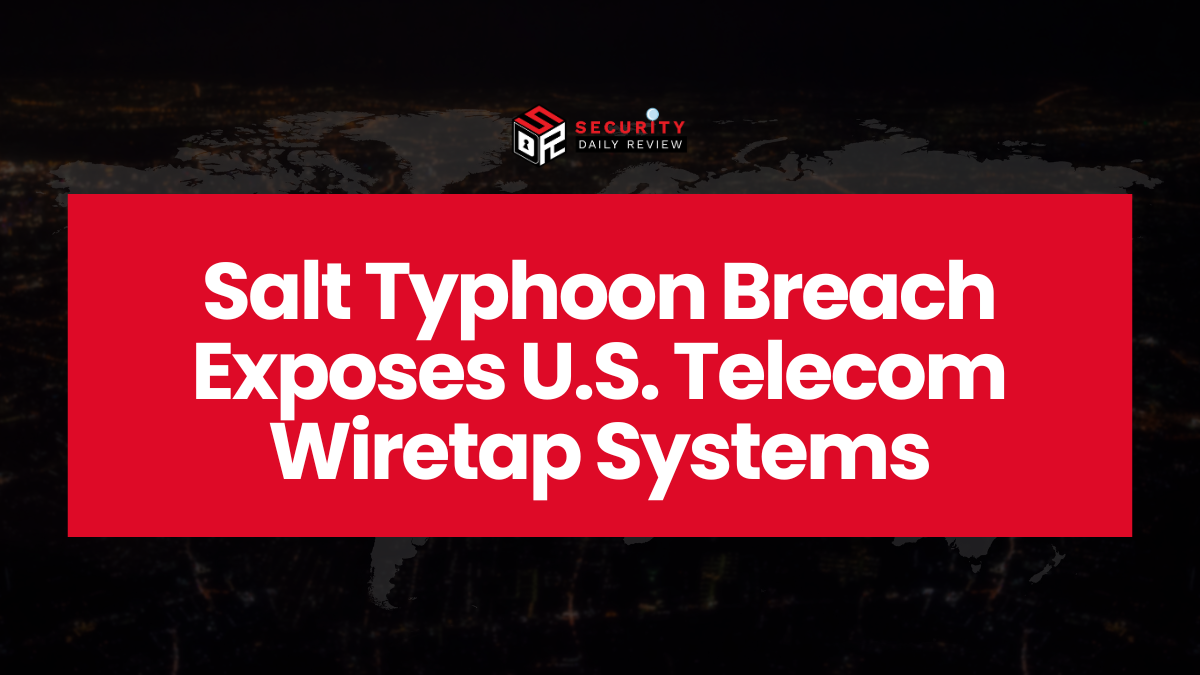A sweeping cyber-espionage campaign attributed to China has exposed glaring vulnerabilities within the United States’ critical communications infrastructure. APT group “Salt Typhoon” allegedly infiltrated some of the largest telecommunications providers in the U.S. throughout 2024, gaining access not only to sensitive metadata from millions of users but also to the very systems used by law enforcement to conduct court-authorized surveillance.
The breach, first uncovered in the fall and gradually detailed by multiple outlets including The Washington Post, Reuters, Forbes, The Economist, and the Associated Press, intensified concerns over the extent of Chinese hackers’ reach and the national security threats posed by sustained breaches across both public and private sector networks.
State-Sponsored Hackers Gained Access to Wiretap Systems and Metadata for Millions
According to reports from The Washington Post, Salt Typhoon successfully breached key U.S. telecommunications companies including AT&T, Verizon, Lumen Technologies, and T-Mobile. In doing so, the attackers accessed metadata from over 1 million users, including:
- Phone numbers associated with calls and messages
- Timestamps of communications
- Source and destination IP addresses
Even more alarmingly, the attackers also compromised systems designed to support government-authorized wiretaps. These systems are mandated for law enforcement to intercept communications under judicial oversight, making this breach not simply a data or privacy issue but a profound threat to the integrity of active surveillance operations.
Forbes corroborated the targeting of wiretap infrastructure and confirmed T-Mobile’s involvement in the breach, though the company stated that no critical systems or customer data were heavily impacted. Nevertheless, Salt Typhoon’s focus on telecom surveillance systems suggests a calculated move to extract intelligence on high-priority targets while undermining U.S. cybersecurity posture.
High-Profile Targets and Long-Term Network Intrusions Reveal Critical Weaknesses
An in-depth report by The Economist revealed that Salt Typhoon had infiltrated at least eight major telecom networks in the U.S. Beyond ordinary users, the attackers appeared to harvest communications metadata and surveillance request details concerning high-profile individuals—including former President Donald Trump, Senator J.D. Vance, and members of both the Biden administration and the Harris-Walz campaign.
The group’s access to wiretap requests is particularly significant. According to The Economist, this may have enabled the identification of individuals under active surveillance, potentially tipping off foreign operatives.
Security experts believe the attackers likely maintained a persistent and covert presence within the telecom networks for an extended period. Reuters reported that these intrusions could have lasted months, given the complexity of the systems breached. This persistence underscores a continuing pattern in state-sponsored cyber attacks, where the emphasis lies on stealth, longevity, and intelligence gathering over outright destruction or ransomware-based extortion.
Allegations Denied by Chinese Authorities Amid Diplomatic Tension
As expected, the Chinese government denied all accusations. Both the Chinese Embassy in Washington and the Chinese Foreign Ministry issued statements rejecting the claims, instead accusing U.S. cybersecurity researchers and intelligence agencies of manufacturing evidence for financial and political gain.
While attribution in cyber attacks is notoriously difficult, the consistency across reports from The Washington Post, Reuters, and the Associated Press in linking Salt Typhoon to the breach tightens the narrative around China’s involvement. That said, security professionals should be cautious and await additional corroborating technical indicators as the investigation proceeds.
Treasury Department Breach Underscores Escalating Threat
As if to compound the seriousness of 2024’s cyber assault on U.S. infrastructure, the Associated Press later revealed that Salt Typhoon or a related group also compromised the U.S. Department of the Treasury. In this case, the attackers accessed unclassified but sensitive documents. Although the Treasury described the infiltrated data as non-critical, the breach points to a coordinated campaign targeting both civilian and government institutions.
In line with previous telecommunications hacks, the Treasury breach again exposed metadata from surveillance operations. Most notably, attackers secured a near-complete list of phone numbers recently placed under wiretap by the U.S. Department of Justice.
Key Takeaways for Security Leaders and Telecom Providers
For Chief Information Security Officers (CISOs), incident response teams, and federal cybersecurity planners, the Chinese hackers’ breach of U.S. telecommunications networks in 2024 represents a decisive call to action. The implications reach beyond individual corporate breaches into the realm of national security and law enforcement.
Key recommendations include:
- Audit and Harden Wiretap Infrastructure : Systems supporting lawful intercepts must be explicitly segmented, monitored, and audited with zero-trust principles in mind.
- Enhanced Metadata Controls : Even without full content interception, metadata exposure enables significant intelligence gathering. Metadata must be encrypted at rest and in transit, with strict access controls.
- Persistent Threat Detection : The prolonged nature of the Salt Typhoon breach demands that telecom providers invest more deeply in threat hunting, anomaly detection, and behavioral analytics.
- Cross-Sector Collaboration : The intersection of DOJ surveillance systems, telecom providers, and federal infrastructure requires unified security governance and real-time intelligence sharing.
As telecommunications breaches grow in scale and sophistication, the 2024 Salt Typhoon incident should reset assumptions about network perimeter security and internal trust models. For U.S. telecom giants and government agencies alike, this was not just a wake-up call—it was a full-scale breach of the country’s digital nervous system.









